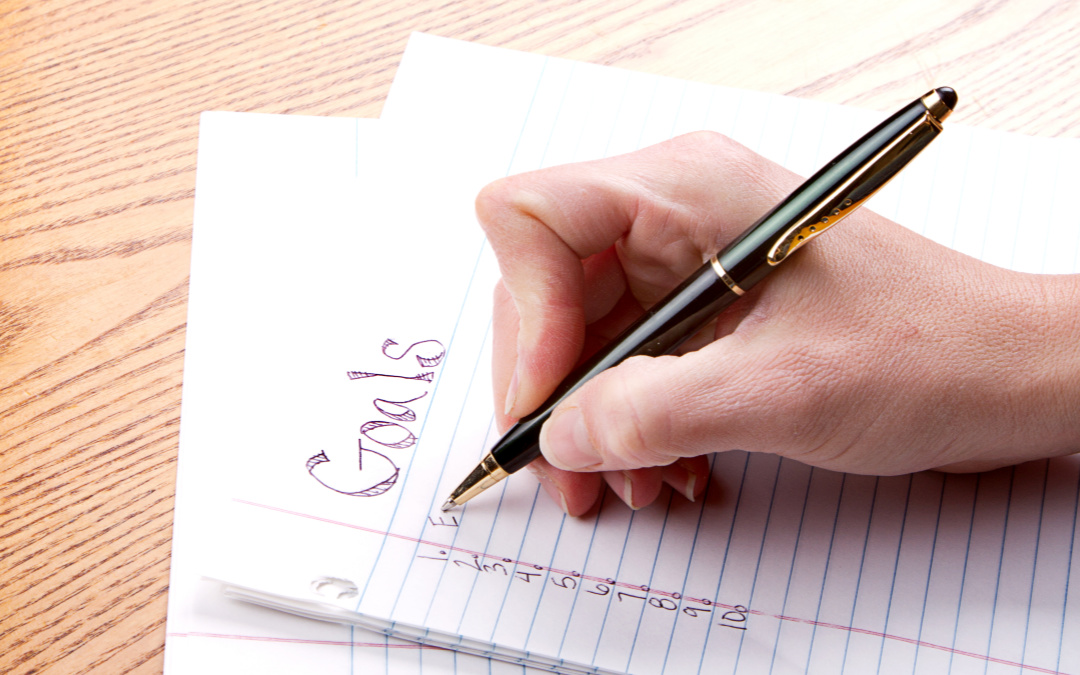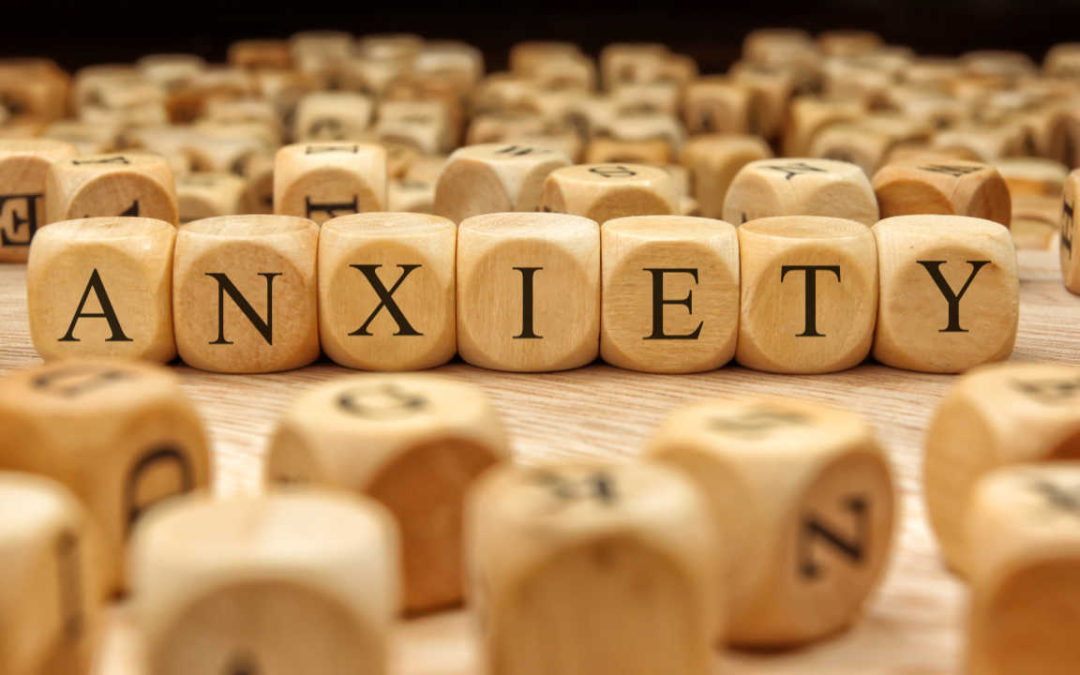According to the Anxiety and Depression Association of America, approximately 40 million American adults have an anxiety disorder.
What is Anxiety?
According to the American Psychiatric Association, anxiety is our body’s reaction to stress. It could be beneficial as it helps our body to pay attention and prepare for dangerous situations.
The American Psychological Association defines anxiety as an emotion characterized by feelings of tension and worries.
In addition, anxiety is also defined as a state of uneasiness, worry, nervousness, and fear that is disproportionate to the actual circumstances.
What Does Anxiety Feel Like?
The most common symptoms of anxiety include:
- faster heartbeat
- sweaty palms
- intrusive thoughts
- trembling
- dizziness
- nervousness
- feeling tired
- rapid breathing
What Causes Anxiety?
There are many circumstances in our every day life that can create anxiety such as:
- Taking a test
- Interviewing for a job
- Accepting new responsibilities
- Meeting new people
- Going to new places and not knowing what to expect
- Stressing over money, relationships, illnesses, or problems
- Coping with traumatic experiences
- Worrying about negative situations
- Fearing negative outcomes
Our anxiety may be amplified by our past stressful experiences such as:
- Bullying at school
- Blaming from loved ones
- Criticism at work or home
- Failing repeatedly when attempting a new or difficult task
- Ridiculing from authority figures
- Traumatic experiences
- Negative circumstances from our childhood
Furthermore, traumatic life changes, genetics, brain chemistry, and personality characteristics also have an impact on our anxiety.
If you notice that your worries, fears, and difficulties making decisions increase it’s a good time to start using effective strategies to deal with anxiety.
10 Effective Ways to Deal With Anxiety
Anxiety is an emotional overwhelm and there are many ways you can calm yourself down.
1 – Control Your Breath
Feelings of anxiety happen because we perceive that there are too many things or circumstances out of our control.
Therefore, by purposefully breathing we are telling our body that we are in control. Taking deep breaths helps to relax and to think more clearly.
Slowly count to 5 while breathing in and filling your belly with air. Then, exhale while counting to 5 and release the air in the belly first. Repeat for a few minutes. You will slow down your heart rate and feel calmer.
Grounding Techniques are very effective to keep anxiety under control.
2 – Take a Walk in Nature
Just listening to the sounds of nature and admiring the beauty and perfection of plants, trees, and flowers will bring a sense of calmness.
3 – Keep the Stress Level Down
Read, relax, and sleep. Take a break from your fearful and worrisome thoughts.
Spend some time with your pet. Animals provide unconditional love and make us feel calm.
In addition, we can improve our mental health by reducing anxiety and depression with turmeric.
4 – Exercise
Walk, run, stretch, dance, or move in anyway that feels good.
Spend some time exercising. Focus on your body and how it feels. This will give your mind something to think about instead of worrying about negative events.
There is no need to get dressed or to worry about crowded classes or gyms. Dance and move your body to the rhythm of your favorite music wherever you feel safe.
Find out how exercising can make you happy.
5 – Leave Your Worries on Paper
Pour all your negative thoughts and feelings on paper. Write down everything that comes to your mind.
Putting your ideas and emotions on paper without worrying about grammar, punctuation, or spelling provides a sense of relief and clarity.
Once on paper, you can clearly see what your worries, concerns, and fears are.
Find out how writing can make you happy.
6 – Stay in the Present Moment
Anxiety comes from negatively focusing on the future. If you keep your mind in the present, your anxiety level will go down.
Moreover, being aware of your senses, thoughts, and feelings without judging them will provide a sense of calm and control.
Find out how being present and practicing mindfulness can make you happy.
7 – Consider the Best-Case Scenario
Anxiety is produced by the stress of dealing with an overwhelming situation. Replace the negative forecast of events by imagining the best-case scenario.
Our expectations shape our future. Instead of imagining the worst that could happen, do the opposite.
Furthermore, what is the perfect situation that you would like to experience? Picture it in your mind. Feel happy and excited for all the good things that will happen.
Find out how to use the best-case scenario strategy.
8 – Set Yourself Up for Success
Is there anything you could do to make the situation easier? Think about what could help you to feel more relaxed.
What could you prepare in advance?
May be think about some answers, research some additional information, take a bottle of water or something you can keep in your hands to release stress.
In addition, it may be useful to think about an easy way to excuse yourself such as pretending that the phone rings or making it a short meeting by excusing yourself in advance.
9 – Clean Up or Organize
The gentle, physical movement of putting things where they belong will keep your mind temporarily busy and unable to think about your worries.
Looking at a sparkling clean and organized corner of your environment will provide a sense of calm and control.
Moreover, if you were able to organize this little corner or shelf, you may as well do the next little area. Watching your progress and how nice it looks will encourage you to keep going and take control of other areas in your life.
10 – Listen to Music
Music impacts our mood.
What music would make you feel more relaxed?
It may be some upbeat music that repeats encouraging phrases or some relaxing rhythm.
Find our how to be happy by listening to music.
If you feel persistent, excessive, and unrealistic worry for 6 months it may be time to consult with a therapist.
Related Posts

Powerful Life-Changing Philosophy that Matthew McConaughey shares in his Book Greenlights
If you have not read Matthew McConaughey's book Greenlights, here you will find a summary of his...

How Working on Your Goals Makes you Happy
Do you believe goals can make you happy? Are you thinking about changing something in your life?...

What Makes a Happy Good Life? 5 Key Components
Are you wondering what makes a happy life? What makes a good life? These age-old questions have...



I usually like to combine exercise and music into one, but my playlist is the weirdest workout playlist you can possibly imagine! I would also suggest adding meditation, as it is a great way to streamline your focus and help reduce anxiety.
I love these tips, they’re amazing! For me, music and working out help a lot.
I am bookmarking this post as usually my anxiety comes at unusual times … but what mostly helps me is reading a book.
I suffer from anxiety and it used to be bed. I did alot that you mentioned on this in the past year and half. It has truly helped me overcome alot.
People need to understand anxiety is a real problem, and we should deal with it.
Thanks for the wonderful tips.
Thanks for sharing such a detailed and informative blog about anxiety. I know a lot of people who have anxiety disorders. This will definitely help.
Great post and you let people understand the different stage of anxiety. I found that I am also having an anxiety and it mostly happening during my job interview.
I have severe anxiety issues. The only thing that helps me is organizing a li’l corner of my room or my kitchen.
Very detailed information on Anxiety. I really like the above points. One of friend really need to read this write up so without wasting single second I am sharing with him.
Learning to control your breath is important. It definitely helps my husband’s niece deal with her anxiety and handle issues a lot better.
I love how clear you state every point here. This article not only very well researched, it is also – very well written. I enjoyed my time spent on your porta.
Love your ideas to deal with anxiety. Well I often listen to music, or do some cleaning chores, write and also go for a brisk walk. Really helps.
Anxieties are part of our lives and we all need to know how to cope with them. As I’ve just seen from a quote, we just got to do what we need to do, so no matter how difficult it is, we just got to accept and do what’s necessary.
For me, if I have anxiety, I will find a different room and just calm down. I might have to close my eyes or just take a breather, but it works.
Anxiety is such a harsh reality of today…I have dealt with it and have felt the despair…Thanks for sharing such in-depth info on it…This will be so so useful to many people..😊